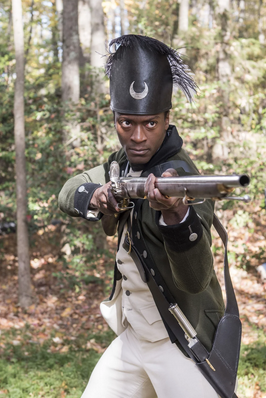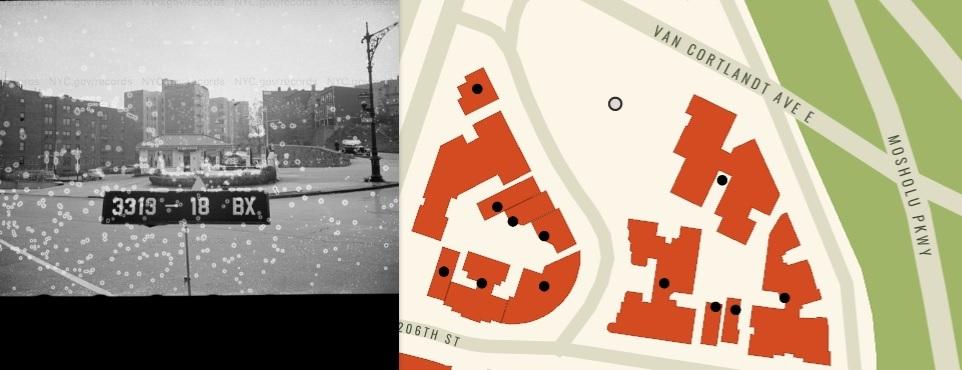Home › Forums › The American Revolution › Mystery of the “Negro Fort”
- This topic has 4 replies, 3 voices, and was last updated 1 year, 1 month ago by
Thomas Casey.
-
AuthorPosts
-
-
June 20, 2023 at 6:05 pm #3432

The AMC TV series Turn, Washington’s Spies, depicted and African soldier, Akinbode, fighting for the Queen’s Rangers. During the American Revolution many hills of the West Bronx were covered with fortifications as the American Patriots, then later the British, made defending the area a priority. One of those forts, the Negro Fort, sat on a hill at today’s 186 St. George’s Crescent, which overlooked the historic Boston Post Road. But the history of its construction and the reason for its name remains something of a mystery due to a lack of historical documents.
The most exhaustive study of the fort that I have read is the impressive Archaeological Documentary Study written by archaeologists Julie Abell Horn (a KHS member) and Cece Saunders.
The archaeologists found three references to the Negro Fort in the memoirs of Patriot General William Heath, who led an attack on the British positions in Kingsbridge in January of 1777. Those are the earliest written accounts that mention the fort by name. Heath’s memoirs make it clear that the fort was garrisoned by “guards and pickets” that were fighting for the British at the time of his attack. The authors also found memoirs from the 1840s that recorded the recollections of a couple of local old-timers: Dennis Valentine and Andrew Corsa. Both of the memoirs briefly mention the fort.
Dennis Valentine’s memoir:
Negro fort about a mile and a half from Dennis Valentine’s . . . so called from a detachment of the Negroes in the British pay, being quartered there, commanded by Captain Cook. (McDonald Papers 1844, Vol. 1:113).
Andrew Corsa’s recollection:
Negro fort or Cook’s fort stood about two hundred yards south of Isaac
Valentine’s stone house on the old Post Road on the left as you go to Kingsbridge and on a round hill near the road. (McDonald Papers 1844, Vol. 1:103).Both of the statements reveal the fort’s location and mention a certain Captain Cook. But who was he? Given the mysterious origins of the fort, the answer to this question could provide some insight. The answer, I think, may have fallen in my lap as I recently read an article about a British loyalist unit known as the Queen’s Rangers. It was a unit of American loyalists fighting for the British cause that was very active in the northwest Bronx. The article mentioned that one company of the Queen’s Rangers was commanded by Captain Robert Cook. The article also referenced the testimony of a deserter from the Queen’s Rangers, who fled the British lines at Kingsbridge in February of 1777. The deserter mentioned that “Captn Cook’s Company of Negroes are (all but three or four) dead; that the Rangers are sickly.”
Taken together with the later memoirs, it would seem that the Negro Fort was garrisoned by Captain Cook’s company of Black soldiers, who fought with the Queen’s Rangers, a British unit. But did these soldiers build the fort? No one has been able to find a document explaining who built the fort and when. However, one historical map depicts the “Negro Fort” and this map was apparently made in late 1776 or early 1777.

Notice that the fort is colored yellow/orange. According to the map legend, this means that the fort was a “rebel work,” meaning a fort built by the Patriot army. Therefore, it would seem that the fort was built by the Patriots and later occupied by a Black company of Queen’s Rangers commanded by Capt. Robert Cook. There is not a ton of evidence to back this up but that’s what the available evidence suggests from what I can tell.

-
June 20, 2023 at 9:10 pm #3435
Thank you for your kind words, Nick. I sure could have used your archival expertise back when I was writing this report, though! I’m glad to see there is at least one Revolutionary War era map that includes the fort after all. It seemed as though it had to exist, although at the time we could not find it. Kudos to the Mount Vernon library for digitizing it and to you for locating and sharing it!
-
June 20, 2023 at 11:28 pm #3436
One of my favorite topics. I do appreciate the fact that the company that made the report concluded and recommended that a plaque commemorating this fort be placed either on the project site or on St. George‟s Crescent itself, to mark the former location of this important cultural resource
-
June 21, 2023 at 9:36 am #3437
1940 – 2019 a gas station was at this location, now a high rise building

-
June 21, 2023 at 9:36 am #3438

-
-
AuthorPosts
- You must be logged in to reply to this topic.